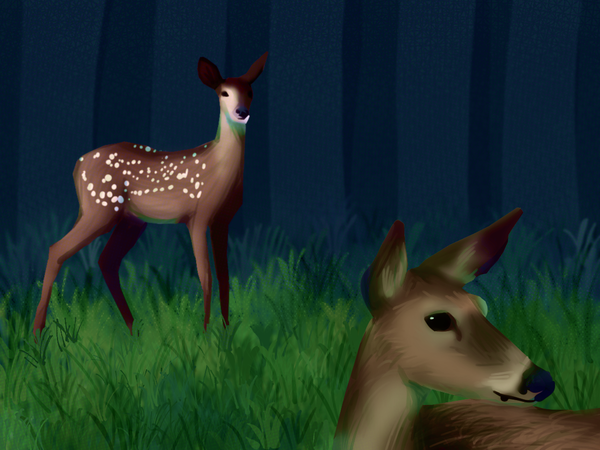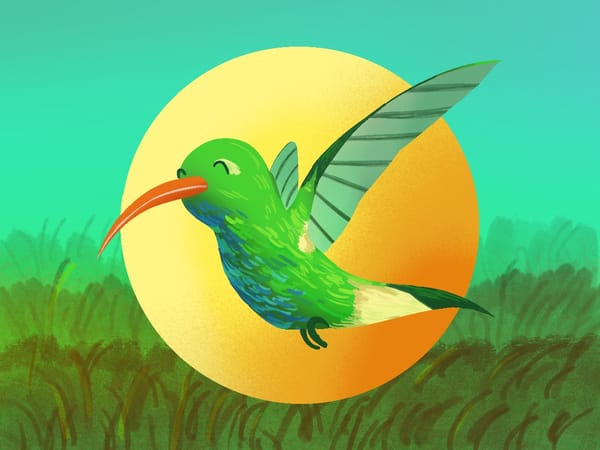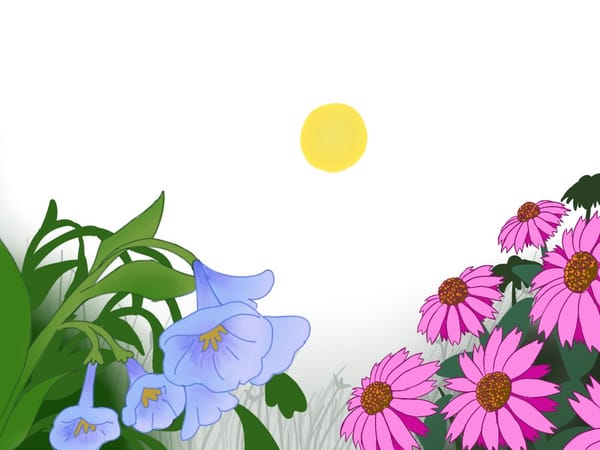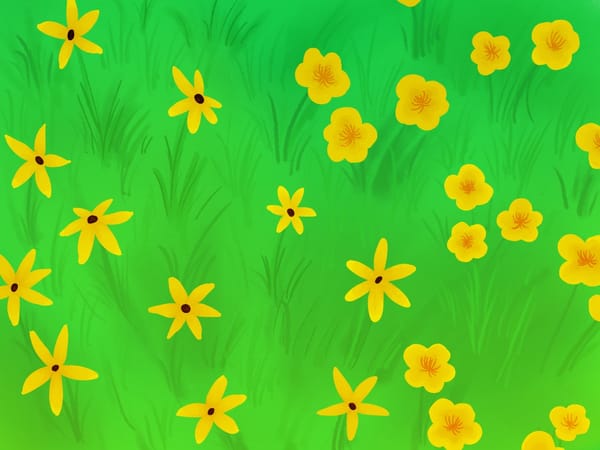My First Native Plants Have Arrived!
This week, I got my first delivery of native plants and put them in the ground (and realized that one plant I bought wasn't actually native).
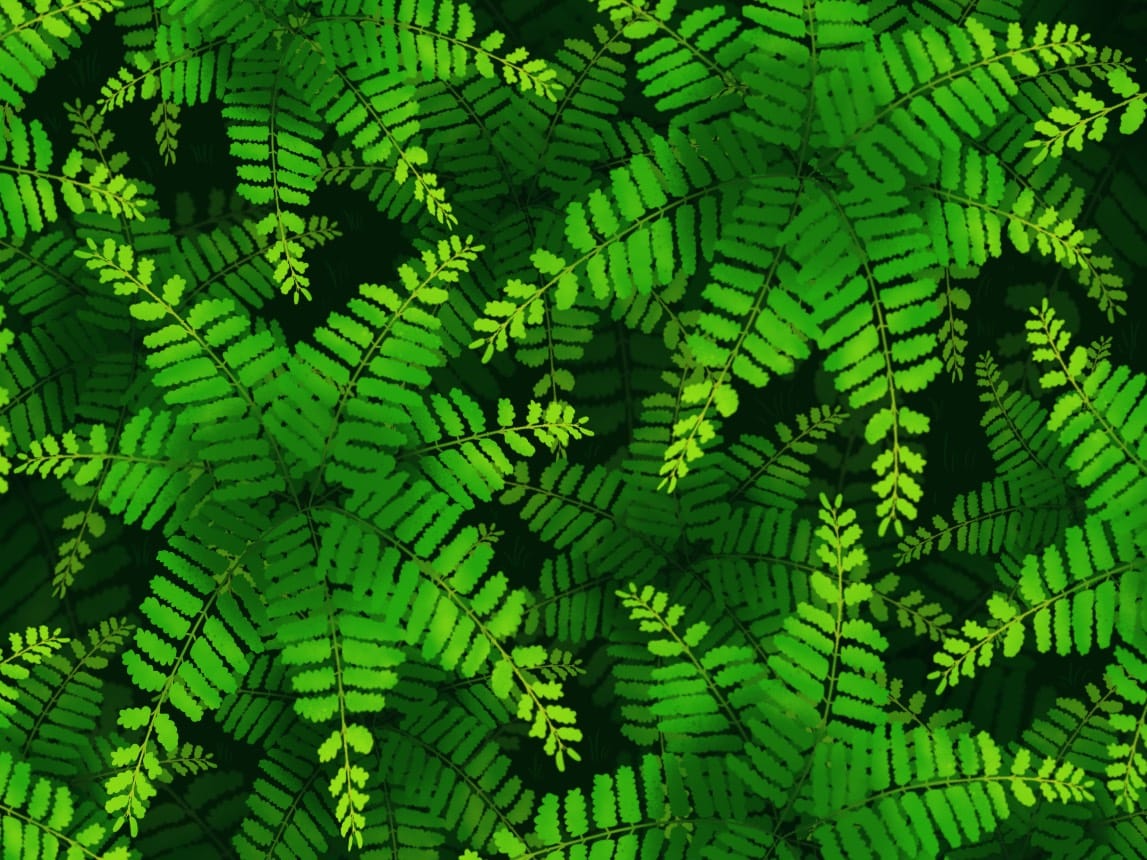
My favorite thing about gardening is seeing everything growing and in bloom when a new season arrives. But my second favorite thing is planning what my garden will look like.
I absolutely love buying new plants. It's a problem. Every time I get a new set of plants, I regret having bought so many when faced with the task of getting them all in the ground. But then when that's done, I'm happy again — if a little sore, bruised, and broken.
For my first planting project, I wanted to fill this area between my retaining wall and porch. I hate how the bare concrete looks, so I love to have plants hiding it.
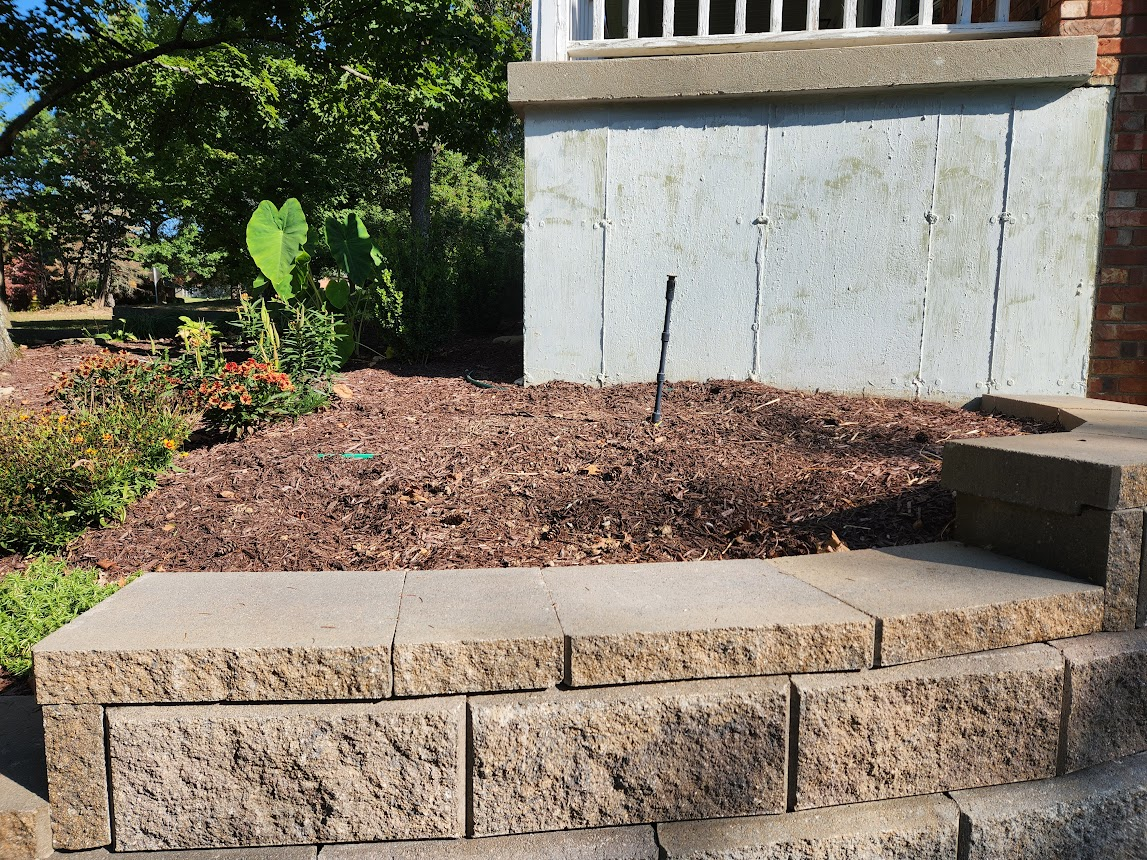
I used to have a big purple grass that covered it up, but then I learned that it was not only not native but also highly invasive, so I pulled that out of the ground a couple of months ago.
The first thing I needed to do for this project was measure the space. This exercise always makes me wish I had perfectly rectangular garden plots. It takes so much longer to measure areas with curves. But I do think the curves are more interesting looking than perfectly straight lines everywhere.
The space I needed to fill was 8 feet wide and 4 feet long at its shortest, extending out to 6.5 feet long at its longest.
At some point this winter, I might test out some of the garden planning apps, but time isn't on my side if I want to get things into the ground this year before it's too late. So I decided to just use my old trusty friend: the spreadsheet.
Basically, what I do is use one cell to represent each half foot of space I need to fill. Then, I can merge cells together once I learn how much space I need between the plants I choose in order to represent how much space they'll take up when fully mature. Here's what I ended up with for this section of the garden.

This specific part of the garden is fully full sun — there's not one moment of the day when it's in shade — so I needed sun-loving plants. After a lot of browsing pictures, reading descriptions, reviewing heights and widths, and changing my mind, I landed on filling the area with eight different plants:
- Prairie Blazing Star
- Cardinal Flower
- Purple Coneflower
- Black Eyed Susan
- Ohio Spiderwort
- Pink Onion
- Smooth Penstemon
- Butterfly Milkweed
(Sadly, I learned after I got them in the ground that Prairie Blazing Star isn't actually native to my area — they're just present in my area. I misunderstood what I saw on the bplant database. Oh well. I now understand the mistake I made and will know to pay more attention in the future.)
Prairie Nursery actually recommends less space than what I planned for around my plants, but to go with their plan, I was going to need around 50 plants. I still have so much space to fill with natives after this tiny section is done, and 50 plants seemed really pricey. So I decided to give them a little more space than recommended since many will likely self-seed or can be divided to fill empty spaces over time.
Prairie Nursery also has this deal where you can get 32 plants at 33% off if you're buying multiples of the same plant, so I opted to go for more space between plants + the discount to save some money.
I'm always nervous buying from a new online nursery because I worry that the plants will be in bad shape when they arrive, but I was really happy when I opened the box from Prairie Nursery. Everything was packed tightly together nicely in a tray with wood shavings that were easy to remove on top of the plants. Everything looked healthy and hadn't been spilled during shipping.
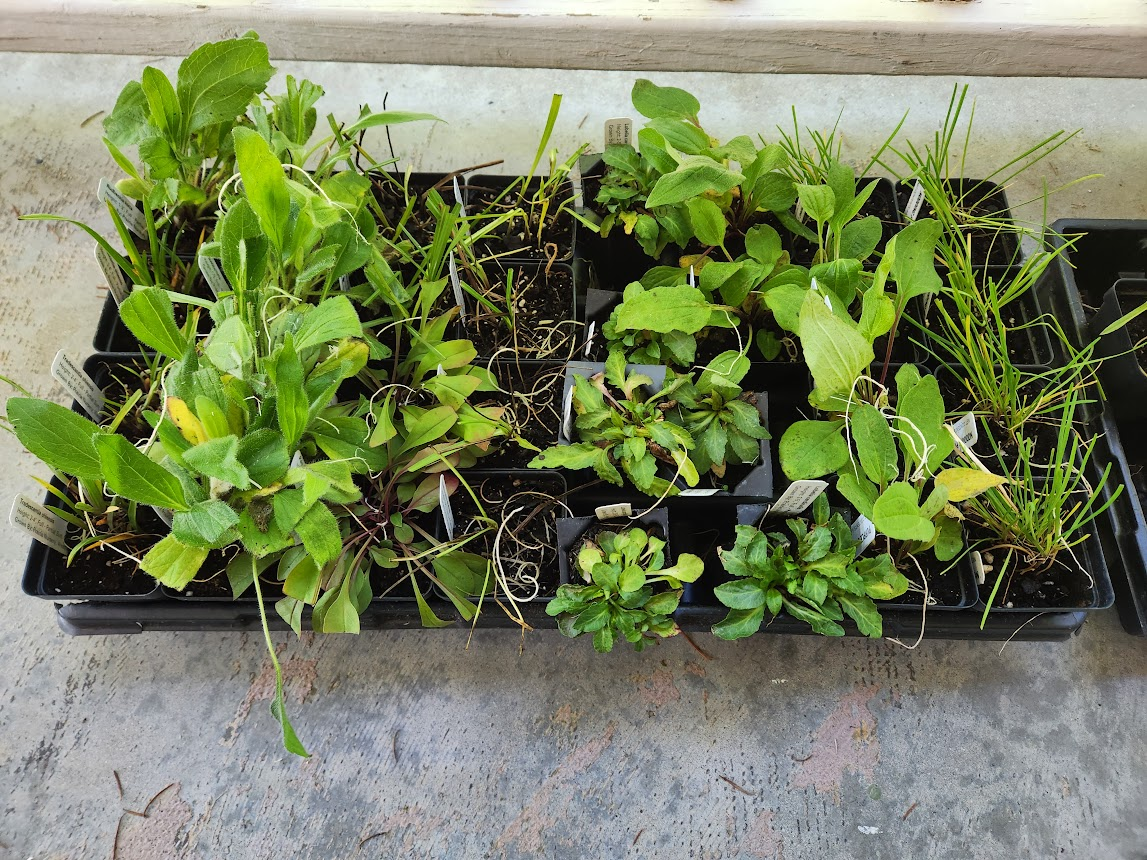
I was also grateful that Prairie Nursery used UPS for shipping instead of FedEx. FedEx delivery is terrible here; I'm pretty sure the driver just drop-kicks boxes onto the porch with no regard for "fragile" or "this side up" notices.
I watered the plants after getting them out of the box and gave them a day in the shade to recover from shipping, then it was time to plant.
The first thing I had to do was remove the existing mulch from the space. The guys who did my retaining wall laid the mulch on really deep, and without removing it, I would have been just planting my plants into mulch and not dirt.
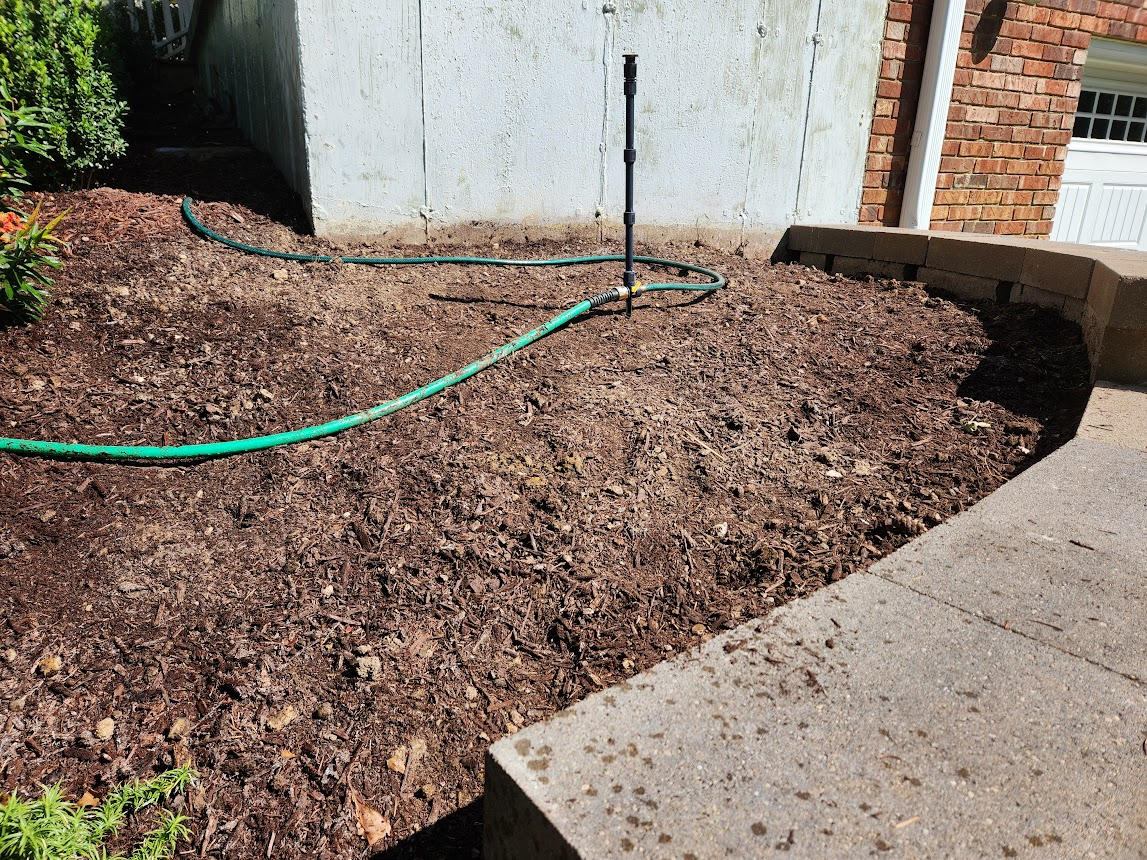
Once that was done, it was time to start planting. I thought planting was going to go a lot faster than it did because the plants were so small, but I unfortunately discovered that the dirt was full of giant rocks that I had to excavate, which made getting the plants in the ground take forever.

The way I like to work is to bring a printout of my garden plan spreadsheet, a measuring tape, a hand shovel, and a few stakes out with me. I measure, stick stakes where the plants are supposed to go, dig, and then reference my spreadsheet to make sure I'm putting the right plants in the right places.
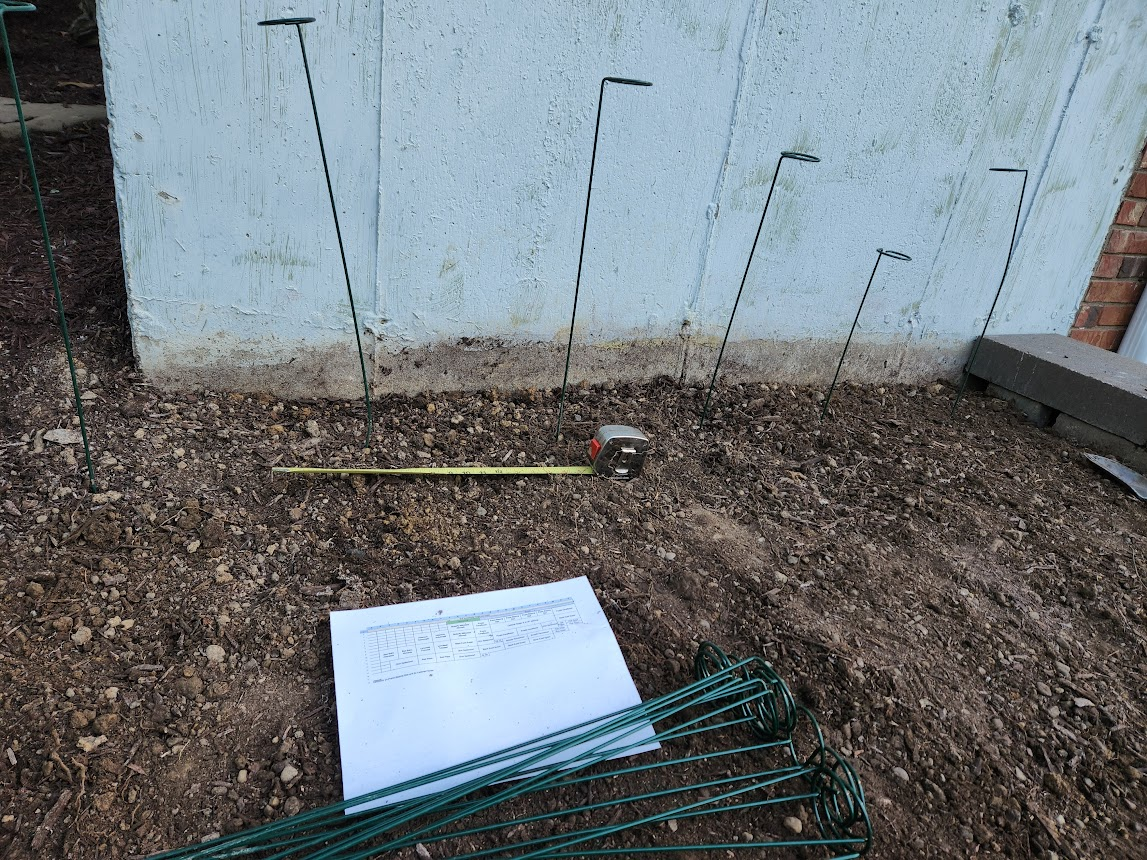
All in all, it took me about six hours to get everything into the ground. Once that was done, I added a light layer of pine mulch to keep the weeds at bay while it's still warm out. I plan to remove that mulch and cover the plants with shredded leaves once they go dormant (and once leaves actually start falling off of trees here). I bought a leaf vacuum with a backpack and built in shredder on Amazon that I'm excited to use to create leaf mulch this fall.
Here's what it all looked like when I was finished and watering the plants in.
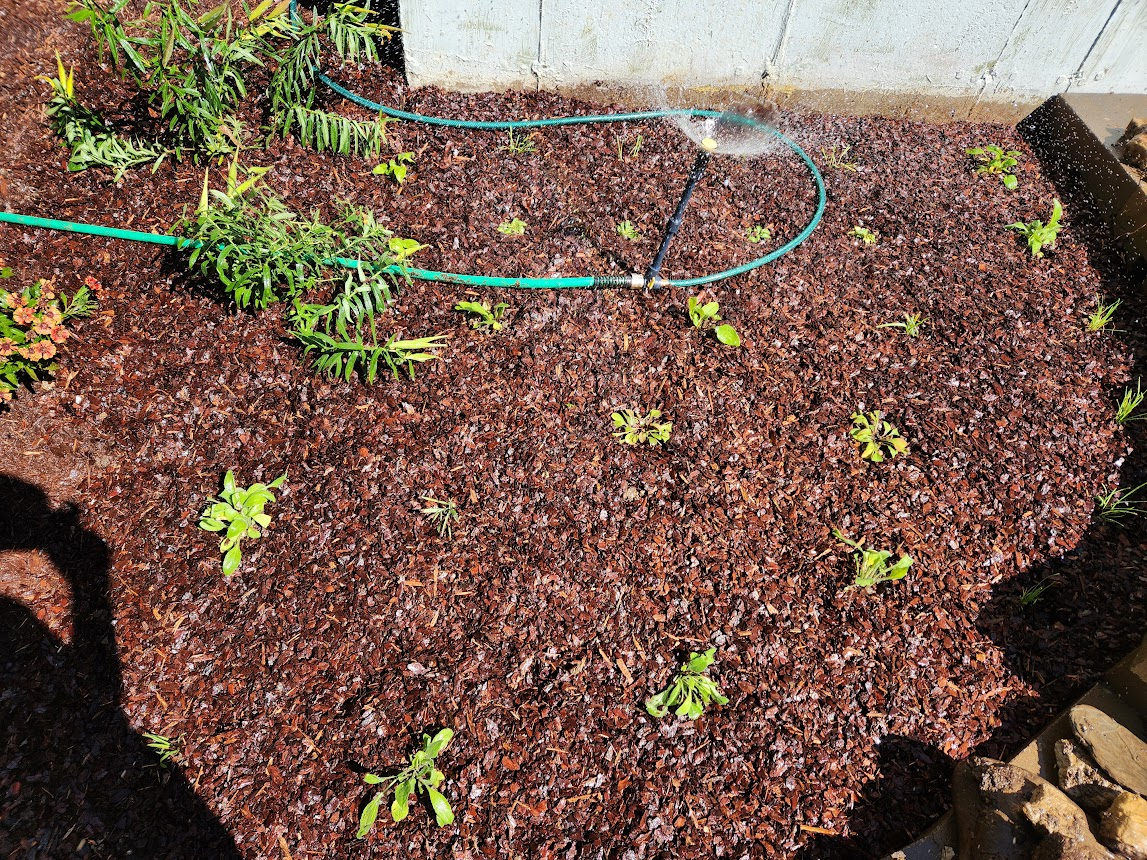
And here it is alongside my existing native plants (and with my new rock collection piled up on the retaining wall).
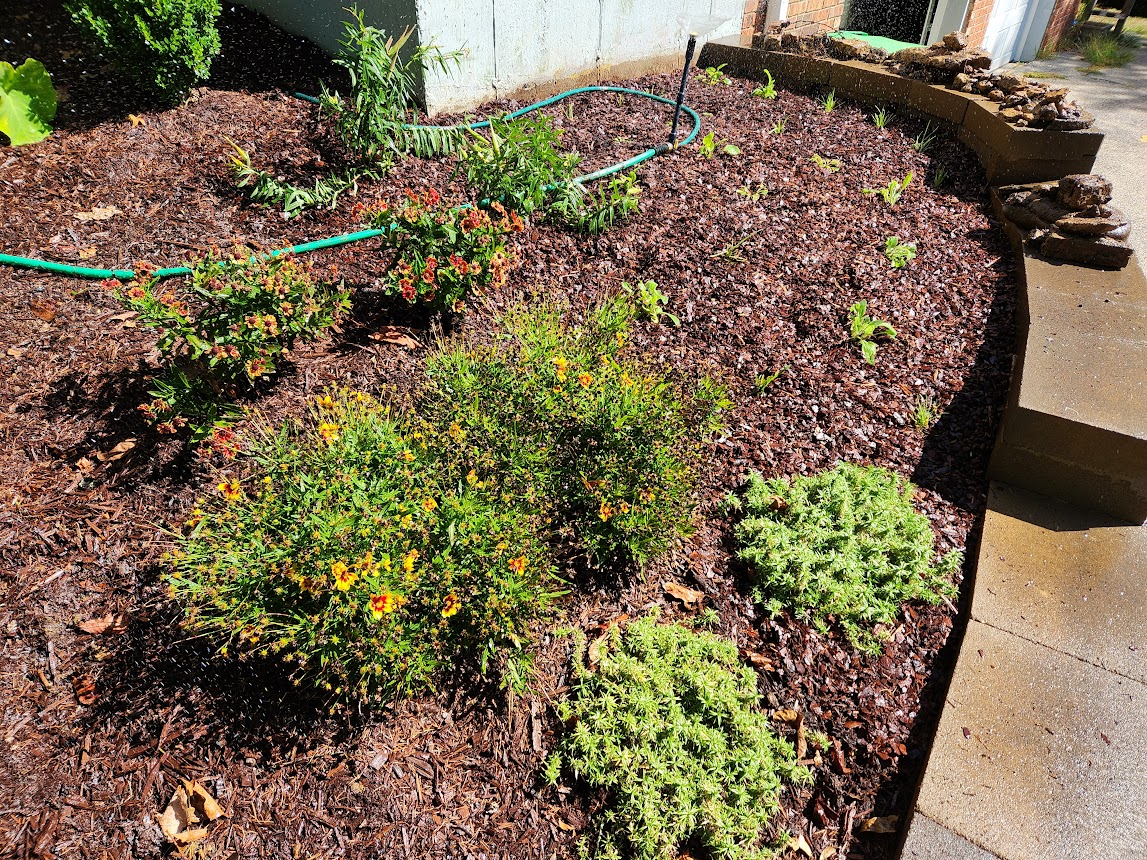
The Butterfly Milkweed isn't a new plant; I got it earlier this year and moved it over a few feet to blend better with the new plants. They weren't thrilled about the move, but I think they'll survive.
I absolutely can't wait to see what it all looks like next year!
After six hours in the 80+ degree temps and direct sun, I felt like I would probably have been okay not planting anything else this year, but remember when I mentioned before that I love buying new plants?
Shortly after I placed the order for these plants, I decided I couldn't live without a few Bush Honeysuckles and Maidenhair Ferns. And those were scheduled to be delivered the next week. There's no rest for the plant-obsessed.
If you want to see what the larger bushes look like when they arrive, make sure to subscribe so you'll get my next post in your inbox!

